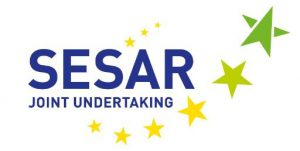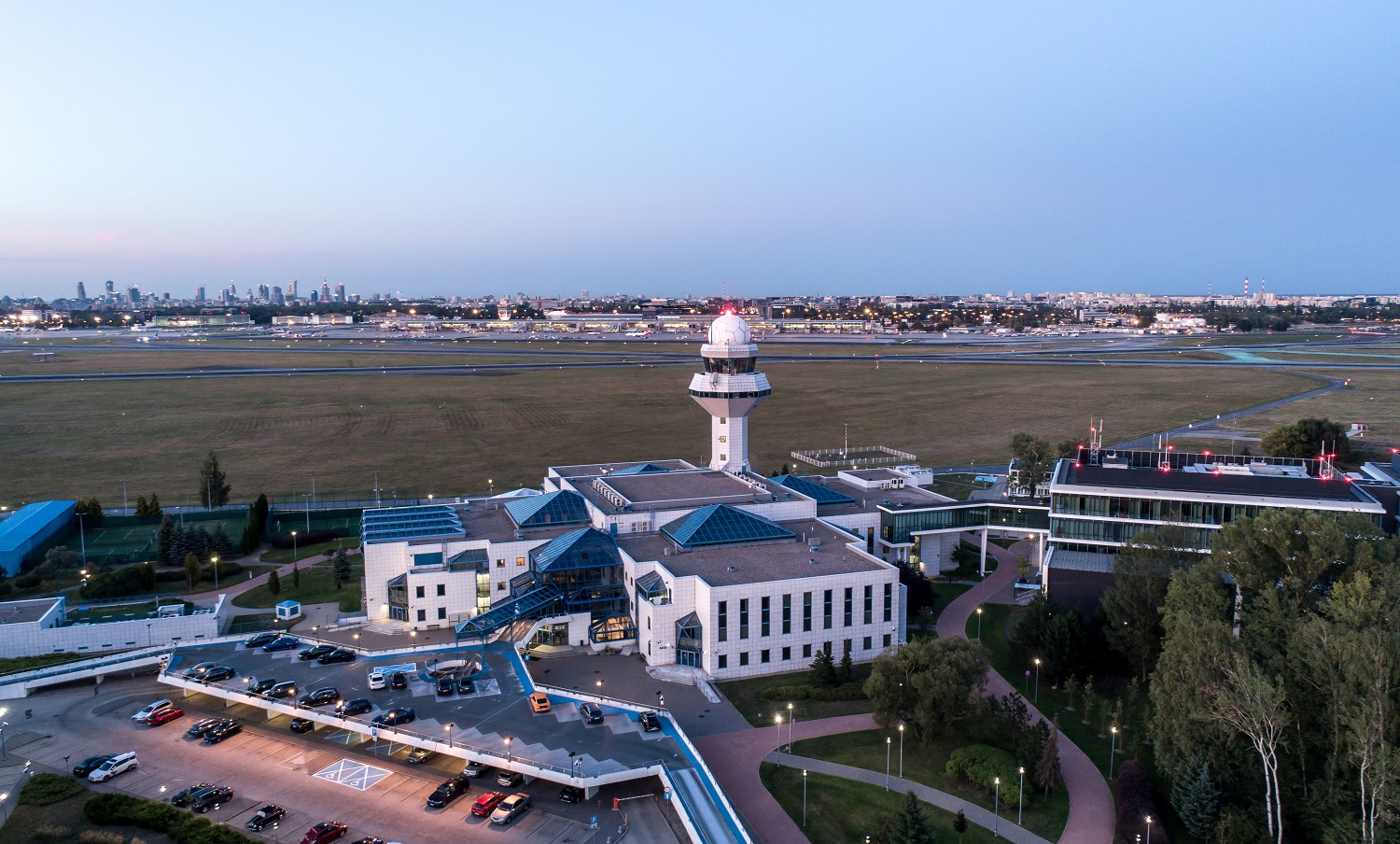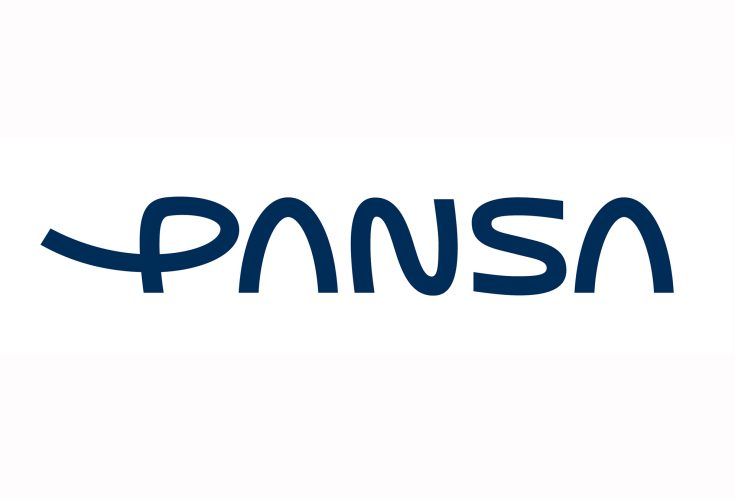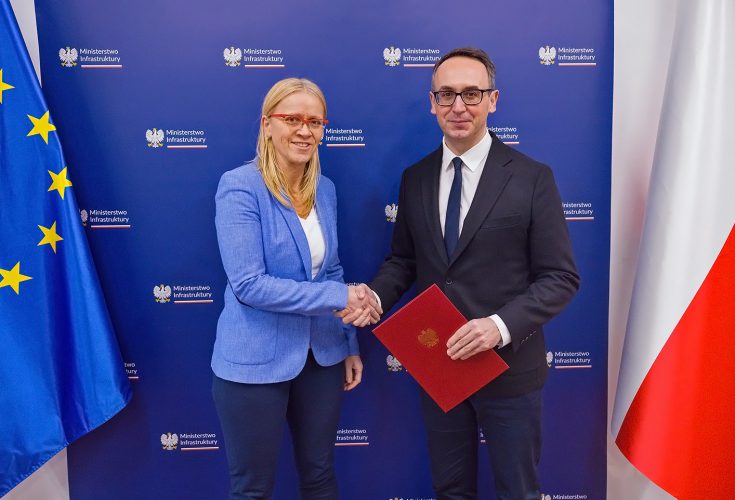Polish Air Navigation Services Agency takes active part in the SESAR programme, the technological pillar of the Single European Sky (SES) initiative. The objective of the undertaking is to develop and implement harmonized air traffic management infrastructure in Europe and solutions allowing defragmentation of the European airspace.
Main goals of the SESAR initiative are to reduce delays in air traffic, cut costs of flight operations, increase airports’ capacity and airspace and to reduce the negative impact that aviation has on the environment.
The program is divided into three phases. The initial phase, completed in 2008, defined common needs and challenges. As a result, the European ATM Master Plan was created – a central document specifying the directions of modernization of the European ATM system. The SESAR programme also includes the research and development phase and the implementation phase, during which new solutions are examined, developed, and finally implemented for operational use. As part of these two stages, the Polish Air Navigation Services Agency participates in the implementation of several dozen projects. Several others have already been completed and the effects of their work effectively are functioning in the Polish and European aviation system. At the same time, the first phase – SESAR R&D allows the development of innovative solutions that take into account the current and future needs of the aviation market.
It is expected that the Agency’s activities in the area of research and development will bring measurable benefits to the entire air traffic system in Poland in the operational, business and strategic areas. Developed solutions are to increase the level of safety, increase airspace capacity and reduce the negative impact of aviation on the environment. At the same time, participation in innovative international programs allows PANSA, as an institution using the latest technologies, to strengthen its position among the largest European air navigation services providers.
Research and Development
The SESAR Joint Undertaking (SJU) established in 2007 is responsible for the introduction and development of solutions under the R&D phase. The institution combined the priorities of European aviation policy with research and development and the actual operational needs of the aviation industry. SJU associates 19 permanent members – air navigation service providers (ANSP) and representatives of the aviation industry, airport managing entities, research and development centers and EUROCONTROL, which is also a founding member. SJU is the European integrator for the aviation research and development environment, which combines available resources with knowledge and experience of aviation entities. The modernization of a system as complex as the European air traffic management requires the involvement of all stakeholders, ranging from regulators and decision-makers, organizations and operational staff, to academic and research communities.
SJU members and partners have jointly developed a roadmap for further modernization of the aviation sector, which presents proposals for comprehensive solutions. Each of them was to have a measurable impact on increasing the airspace capacity and optimizing the use of its structures, as well as ensuring a stable and sustainable European ATM system.
SJU’s work also include research and development activities focused on supporting the technologies necessary for the safe integration of unmanned aviation with manned traffic as part of the EU U-space initiative.
In 2016, the second edition of the SESAR programme began: SESAR 2020, scheduled for 2016-2024. SESAR 2020 is co-financed under the Horizon 2020 Programme – the largest research and innovation programme in the history of the EU.
PANSA in Wave 2
The Polish Air Navigation Services Agency, a member of the SJU as part of the B4 Consortium (ANSPs of Poland, Czech Republic, Lithuania and Slovakia), actively and prominently participates in the implementation of research and development tasks related to, inter alia, increasing the capacity of runways and airports, airspace management and tools automating air traffic control processes.
The Agency is involved in developing technologies and solutions to modernize air traffic management in Europe.
Currently, PANSA is participating in the next part of the SESAR 2020 program – Wave 2, which began in December 2019.
PANSA carries out research and development on its own concepts and those proposed by its partners in the SESAR 2020 programme. The solutions developed under SESAR 2020 projects (Industrial Research and Validation, IR&V projects) are to bring operational benefits such as increasing airspace capacity, reducing negative impact on environment, shortening trajectories, increasing capacity and availability of airports, and reducing the operational costs of air navigation services. Ongoing participation in R&D under Wave 2 SESAR 2020 is also one of the important instruments for implementing the Agency’s Strategy in the operational area, enabling the development of the aviation industry in Poland.
As part of Wave 2, PANSA participates in the following SESAR 2020 Projects and Solutions:
PJ.02-W2: Airport Airside and Runway Throughput:
- SESAR 2020 Solution #17: Improved access to secondary airports, which aims to develop and validate advanced operational and technical solutions enabling an increase in the availability of small/medium airports in all weather conditions, including limited visibility;
- SESAR 2020 Solution #25: Safety support tools for avoiding runway excursions, which aims to develop and validate advanced operational and technical solutions that reduce the risk of runway excursions in all airport operational areas;
PJ.04-W2: Total Airport Management:
- SESAR 2020 Solution #28: Network Connected Airports, which aims to develop and validate advanced operational and technical solutions supporting the integration of airports and the Network;
- SESAR 2020 Solution #29: Digital Smart Airports, which aims to develop and validate advanced operational and technical solutions supporting airport stakeholders in collaborative decision-making improving airport performance;
PJ.05-W2: Digital Technology For Tower
- SESAR 2020 Solution #35: Multiple Remote Tower and Remote Tower Centre, which aims to validate advanced operational and technical solutions that increase the availability of remote air traffic services through the use of RTC (Remote Tower Center);
VLD.02 W2: Surface Traffic Alerts Improve Runway Safety, which aims to demonstrate the technological readiness of solutions improving safety on the runway to the industrialization phase;
PJ.10-W2: Separation Management En-route and TMA:
- SESAR 2020 Solution #93: Delegation of airspace between ATSUs using Virtual Centre concept, which aims to validate the concept of “Delegation of airspace between ATSUs” in real conditions arising from the needs of emergency situations and operational and organizational needs, taking into account the impact on services defined in the concept of “Virtual Center”;
PJ.13-W2: Enable RPAS Insertion in Controlled Airspace:
- SESAR 2020 Solution #117: IFR RPAS integration in Airspace Class A to C, which aims to develop and validate operational and technical solutions ensuring the possibility of performing operations of unmanned aerial vehicles alongside IFR traffic in the controlled space A to C;
PJ.18-W2: 4D Skyways:
- SESAR 2020 Solution #53: Improved Ground Trajectory Predictions enabling future automation tools, which aims to develop tools for ATCOs using technical solutions to improve trajectory prediction (Wave 1 result) to improve the quality of separation management in the En-route and TMA environment;
- SESAR 2020 Solution #56: Improved vertical profiles through safe vertical clearances, which aims to develop and verify operational procedures for ATC and crews in TBO (Trajectory Based Operations) conditions using complex ATC permits for immediate flight profile changes or anticipated changes in flight trajectories with the support of tools increasing the level of ATC/cockpit automation;
- SESAR 2020 Solution #88: Trajectory Prediction Common Service, which aims to develop a architecture for providing services to ATM process participants with reliable information about the anticipated flight trajectory ensuring cost-effective transition to TBO based operations management;
PJ.07-W2: Optimised Airspace Uses Operations:
- SESAR 2020 Solution #40: Mission trajectories management with integrated Dynamic Mobile Areas Type 1 and Type 2, which aims to further validate the concept of Dynamic Airspace Configuration (DAC) based on the management of mission trajectories (MT) integrated with the management of new type zones, i.e. Dynamic Mobile Area (DMA) integrated with related cooperation processes between entities participating in ASM processes;
PJ.09-W2: Digital Network Management Services:
- SESAR 2020 Solution Sol #44: Dynamic Airspace Configurations (DAC), which aims to develop and validate a solution that improves the use of airspace capacity for both civilian and military users by increasing the level of detail and flexibility in airspace configuration;
PJ.19-W2: Content Integration Project, covering activities supporting the implementation of the SESAR 2020 Program aimed at ensuring the delivery of SESAR operational and technological solutions in accordance with the ATM Master Plan;
PJ.20-W2: Master Planning Project, covering activities aimed at ensuring strategic control of SESAR 2020 projects in line with SESAR Vision priorities.





